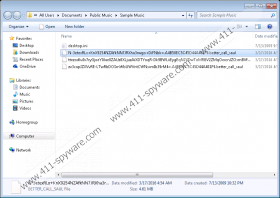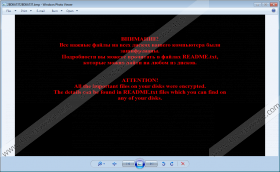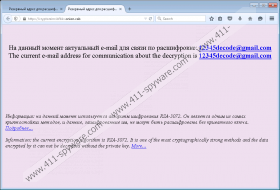Better_call_saul Ransomware Removal Guide
The name of Better_call_saul Ransomware might be confusing to people who are not familiar with this ransomware. No, this infection has nothing to do with a popular TV show. This infection is named after an extension that it adds to encrypted files. Just like Locked Ransomware, Cerber Ransomware, Hi Buddy Ransomware, and all other malicious threats that we have analyzed in the past, this infection encrypts your files to make them inaccessible to you. According to the information provided by this threat – and we will discuss this further in the report – your files will be decrypted only if you follow the instructions of this infection and pay a ransom. Can you trust cyber crooks? Of course you cannot, and we cannot guarantee that your files would, indeed, be decrypted if you followed their demands. If you do not want to follow these demands, you need to delete Better_call_saul Ransomware immediately.
Among the files encrypted by Better_call_saul Ransomware you will find .wb2, .cdr, .pdf, .pptx, .png, .avi, .mkv, .mov, and .java files. Needless to say, this infection targets personal files; otherwise, it would be much more difficult to make you pay the ransom. The thing with personal files is that they are irreplaceable, and you cannot just download them, unless they are backed up. External drives and online backup systems should always be used to protect your files. Even if they are not in danger of getting encrypted, they could be damaged or lost due to system failures and crashes. Make sure you back up your photos, videos, documents, and other personal files frequently to avoid their loss or corruption. If you had taken care of this prior to the entrance of Better_call_saul Ransomware, you do not even need to think about paying the ransom! Quickly eliminate this malicious infection and scan your PC to check for any other threats that might require urgent removal.
Once installed, Better_call_saul Ransomware will create text files, such as readme5.txt, to accompany every single encrypted file. Therefore, once you find an encrypted file (look for the .better_call_saul extension), you will find a TXT file explaining your situation. Furthermore, your desktop background will be replaced with a .bmp file (random name) informing that your files were encrypted and that you must find a README.txt file to learn how to decrypt them. This text file introduces you to emails (e.g., post77999@gmail.com) and websites (e.g., http://cryptorzimsbfbkx.onion) that you supposedly need to interact with in order to retrieve a decryption key. Here is an excerpt from the message.
All the important files on your computer were encrypted.
To decrypt the files you should send the following code: {code} to e-mail address {email address}.
Then you will receive all necessary instructions.
All the attempts of decryption by yourself will result only in irrevocable loss of your data.
Needless to say, this warning puts off users from trying to decrypt their files themselves. In reality, it is unlikely that there is a way to decrypt your files without the decryption key, and you can retrieve it only by fulfilling the demands of cyber criminals. As you can see, cyber criminals have a very powerful tool in their hands, and it is up to you to protect your operating system. The saying that lightning does not strike twice is not right in this situation. Once you remove Better_call_saul Ransomware, it is possible that another malicious ransomware – or even the same one – will find its way into your operating system. Of course, we advise implementing reliable security software, but your own input is crucial as well. It was found that the installer of this ransomware hides as MS Office Word documents attached to spam emails, and it is up to you to remove these emails without interacting with them. You also need to be careful with other kinds of social engineering scams and drive-by download attacks that could be used to infiltrate malware into your Windows operating system.
You have to be experienced to erase Better_call_saul Ransomware from your operating system successfully. If you are inexperienced, it is unlikely that you will be able to detect and delete all malicious files yourself. Of course, you can use a malware scanner to help you detect malicious components, but are you sure you want to spend your time trying to find and delete malware? After all, even if you are successful on your own, your operating system will still lack the protection it needs, and this is exactly why we suggest solving all of these issues by installing a trustworthy anti-malware tool.
How to delete Better_call_saul Ransomware
- Launch a browser and visit http://www.411-spyware.com/spyhunter .
- Download a free malware scanner to help you detect malware.
- Open Explorer (simultaneously tap Win+E).
- Type %ALLUSERSPROFILE%\Windows (%ALLUSERSPROFILE%\Application Data\Windows) into the address bar at the top and tap Enter on the keyboard.
- Find the file called csrss.exe and Delete it (note that csrss.exe is also the name of a legitimate file that, of course, you should not eliminate).
- Delete the malicious executable that was used to launch the infection.
- Delete the BMP file representing the ransomware note.
Better_call_saul Ransomware Screenshots:




